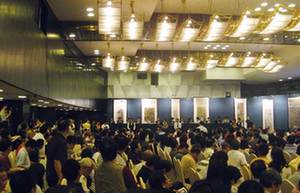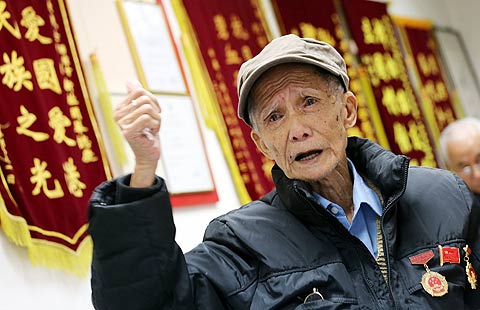Young at heart, and they love art
Updated: 2014-06-20 08:21
By Huang Ying (China Daily)
|
|||||||||||
"Young collectors buy the artwork within their means, which will rise over the next few years," he added.
A number of global auction houses established offices in China, and they have been committed to curating local art as well as helping local young artists and collectors to develop, according to You.
As early as 1994, Christie's set up an office in the Chinese mainland. In April 2013, it received a license from the government to operate independently in the Chinese mainland, the first global auction house allowed to conduct such operations in the market.
The Chinese mainland has become one of Christie's four business regions where it operates independently, the other three being Europe, the Americas and the rest of Asia.
"The opportunity in the Chinese mainland is quite big, so it deserves its own attention," said Steven Murphy, chief executive officer of Christie's, in an interview with the 21st Century Business Herald newspaper.
Another international auctioneer, Sotheby's, is also expanding in China. In 2012, it set up a joint venture with State-owned Beijing Gehua Cultural Development Group, through which Sotheby's was licensed to conduct auction business in the Chinese mainland.
Sotheby's holds an 80 percent stake in the joint venture, known as Sotheby's (Beijing) Auction Co Ltd.
In the Chinese mainland market, domestic auction houses such as Beijing Poly International Auction Co Ltd and China Guardian Auctions Co Ltd are the largest competitors for global auctioneers such as Christie's and Sotheby's.
Poly's sales climbed from 6.1 billion yuan ($989 million) in 2012 to 7.9 billion yuan in 2013, while China Guardian's sales grew to 6.6 billion yuan from 5.2 billion yuan during the same period.
In 2012, the two domestic auction houses accounted for 20 percent of the market, while Christie's and Sotheby's took 15 percent.
"Global auctioneers are still getting used to the local market," said You.
Art market observers said that challenges facing global auction houses in the domestic market include figuring out local collectors' tastes and adapting to the policy restrictions and business culture.
But the global players' entry into the Chinese mainland is undoubtedly a boost to the auction business, industry analysts said.
"Global auctioneers have brought new ideas to the market, as well as their more advanced operating models and management. The strengthened competition will drive the art industry's development in the Chinese mainland," said Xu.
Global auctioneers are restricted from running auctions for Chinese cultural relics in the market, including Chinese traditional paintings and calligraphy, porcelain and antiques.
According to the foundation's report, high taxes, regional protection and local collectors' low acceptance of exotic art will make it difficult for China to overtake the US as the center of international art trade.
|
 |
 |
| Shanghai eyes bigger role in art auction market | China art auction sales top $40 million |
Related Stories
Art auction raises funds to save capital's hutong 2010-07-19 07:58
Lehman art auction beats estimates at $2.6 million 2010-09-30 09:11
Art auction will benefit Elton John's AIDS charity 2011-10-01 11:42
Picasso work sets world art-auction record 2010-05-05 08:57
Today's Top News
China eyes more joint projects with Greece
Ukraine plans unilateral cease-fire
Russia to build gas pipeline to China
Jack Ma, Gates discuss charity dinner
Li's Britain journey 'to help build trust'
Boat sinks off Malaysia, 97 aboard
Orphans adoption on downward trend
TV series aims to 'decode' China
Hot Topics
Lunar probe , China growth forecasts, Emission rules get tougher, China seen through 'colored lens', International board,
Editor's Picks

|

|

|

|

|

|





